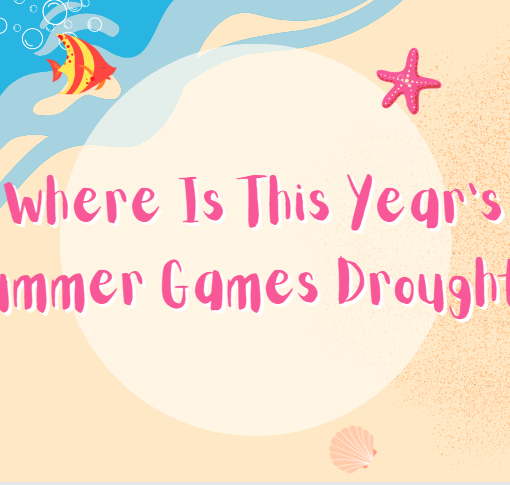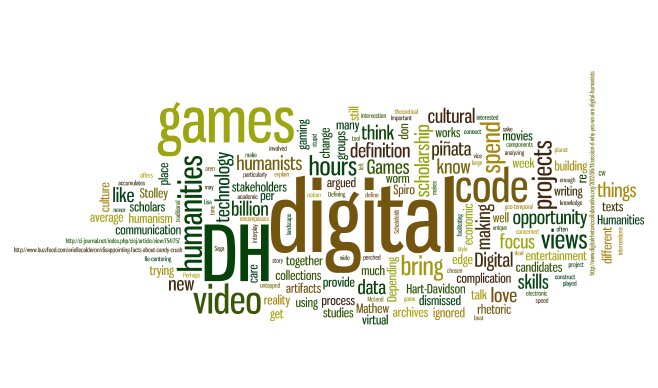In her post this week, Alisha discussed both the challenges of and need for feminist writing that examines, as she puts it, our “world of games.” Her discussion of these things brought to mind, for me, a book I’ve been reading this week—namely, Writing Academic Texts Differently: Intersectional Feminist Methodologies and the Playful Art of Writing, an edited anthology that links the processes of academic and creative writing in order to discuss intersectional feminist writing methodologies. I’ve been thinking a lot about feminist methodologies lately—about the need for methodological pluralism in feminist game studies, about intersectional feminist approaches to phenomenology—but something I haven’t necessarily considered until recently is the methodological significance of the act of writing itself. And I’ve been thinking, too, about the methodological role writing then plays in feminist game studies.
One of the chapters in this volume, Redi Kooback’s “Writing in Stuck Places,” has especially resonated with me. In this chapter, Kooback addresses the issue of getting “stuck” during the academic writing process, of being “caught in a seemingly never-ending maze of stuck places upon stuck places upon stuck places.” Indeed, Kooback highlights the frustrating nature of this maze, the ways we perceive theses stuck places as being obstacles, setbacks, challenges that need to be overcome swiftly in order to write a final product that is “a neat and nice progression narrative that moved effortlessly from a problem to a discussion to a possible solution and after final edits is cleansed of all ambiguities, ambivalences and stuck places that I might have had to struggle with during the writing process.” But Kooback pushes against this, arguing that we should instead be “focusing on stuckness as a way to keep moving and working oneself through impossibilities in writing”—to implement what she calls a “kind of enabling stuckness” in order to reconceive it, to think of it not as a “static irritant” but as moments we should purposefully seek out, live in, and learn from. And by looking more closely at “the stickiness of stuck places in writing and research,” we might be able to conceive of stuckness as something that, ultimately, helps us trust our writing processes.
What makes this approach a feminist one is the fact that “getting lost” is a methodological alternative that challenges and deprivileges mastery discourses because it focuses on “places where we are not so sure of ourselves and where this not knowing could be seen as our best chance for a different sort of doing and knowing.” This idea of a different sort of doing and knowing reminds me of feminist epistemology—of the feminist efforts to unsettle hegemonic, positivist constructions of who gets to be knowers and what gets to be known. This different sort of doing and knowing also highlights the fact that, Kooback continues, there is no one “innocent, better and all-knowing place” from which one writes but that using stuck places and getting lost in writing allows us to productively consider tensions and questions in our writing as a way of performing “the textual double move of doing and troubling knowledge at the same time and thus perhaps locates us more ethically in between knowing and not knowing.”
Thus, Kooback argues “towards a praxis of stuck places”—that is, she argues that we should view stucknesses as productive moments (not as temporary obstacles to be overcome), which then constructs research and writing “as lived and living experience.” For Kooback, then, writing in and through stuck places constitutes a feminist methodology, one that “involves realizing that we are not in control and articulating this being lost in our practice of research in order to explore a philosophy of inquiry that is ethically grounded in not knowing.” As such, this methodological stuckness allows us to use “getting lost” in order to reflexively move forward with our writing and to efficiently interrogate the difficulties of the writing process in a way that “helps us to move out of the controlling master discourses…and may thus reveal the necessary blind spots in our knowledge.”
This idea of the stuck places in our writing brings to mind, for me, the stuck places in our play—the points at which we become stuck in a game, at which we can’t seem to solve the puzzle, at which we can’t find our way to the next level or objective (or, in my case, while I was playing Dishonored 2 during our last Gaming for Good marathon, the vicious cycle during which I kept falling out of the same tree over and over again). These moments feel like failure, moments that prevent us from continuing our play, obstacles in the way of our gaming—but perhaps we might view these moments of stuckness in play in a similar way as Kooback’s perspective on stuckness in writing. Perhaps we might see these stuck places as being integral to our experiences and understandings of play. Perhaps these are productive moments. Perhaps these moments of “getting lost” allow for (to reiterate Kooback’s phrasing) “a different sort of doing and knowing” in the world of games.
And perhaps, then, this praxis of stuck places has methodological significance for feminist game studies—because this praxis has implications both for our writing and our play. This praxis allows us to implement our research, our play, and our writing in ways that destabilize mastery discourses, that provide us with alternative ways of doing and knowing, and that allow us to reflexively interrogate the ways feminist game studies methodologies open up new understandings for our lived and living experiences in the world of games.




